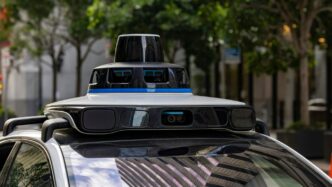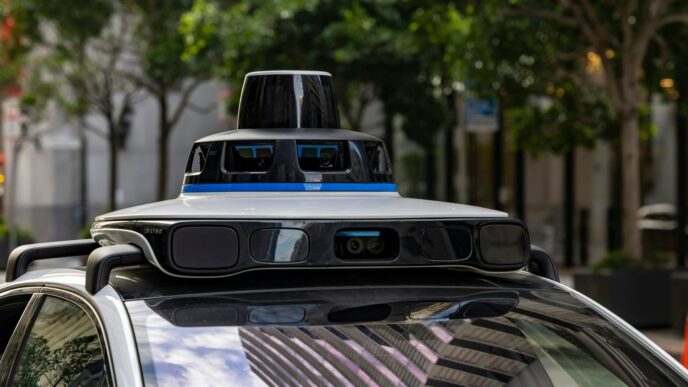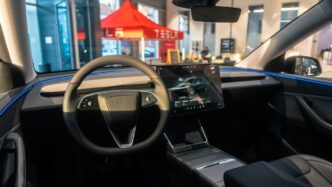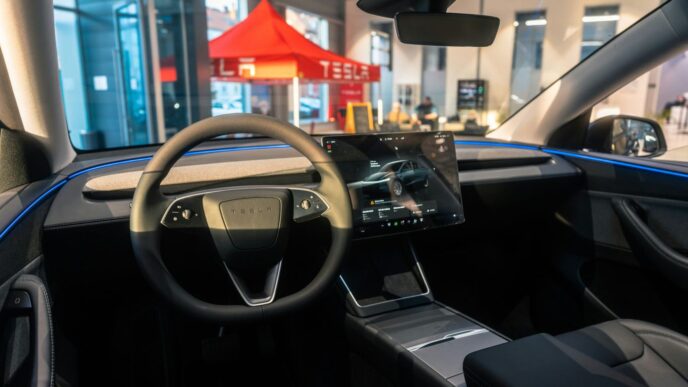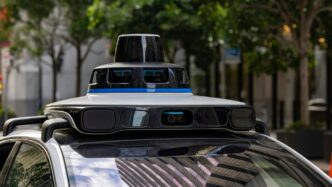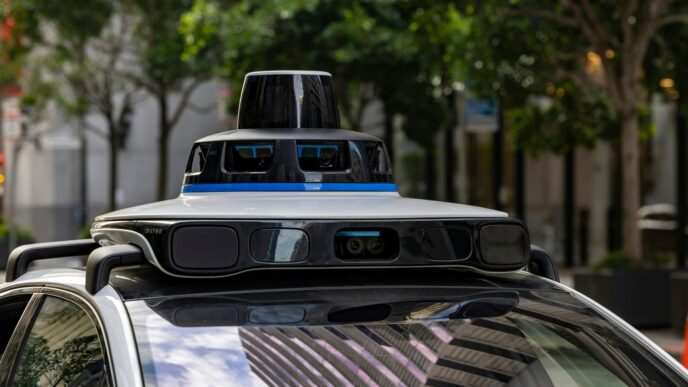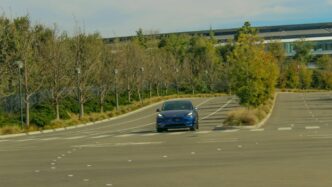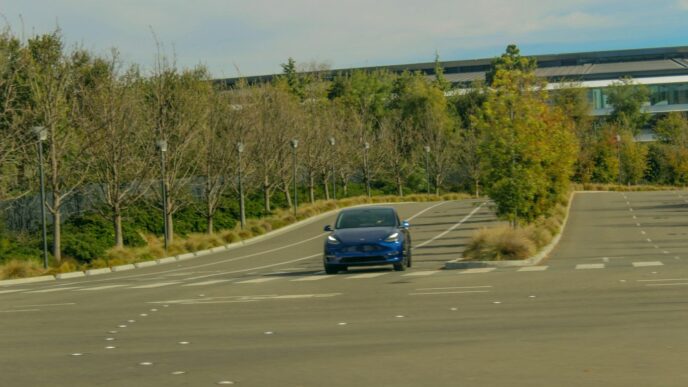Understanding Autonomous Vehicle Level 3
Autonomous Vehicle Level 3, often called Conditional Driving Automation, marks a significant step up from the driver assistance systems we’ve become accustomed to. This is the level where the car can handle the driving task under specific conditions, but you, the driver, still need to be ready to jump back in when asked. Think of it as the car taking the wheel for a while, but with a clear understanding that you’re still the ultimate backup. It’s not quite full self-driving, but it’s a big leap beyond just having cruise control and lane keeping. This technology relies on a sophisticated mix of sensors and software working together to make sense of the world around the vehicle.
Defining Conditional Driving Automation
Conditional Driving Automation means the vehicle’s automated driving system can manage all aspects of driving, but only within a defined set of circumstances. This is known as the Operating Design Domain, or ODD. For example, a Level 3 system might be designed to work perfectly on a highway in clear weather, handling steering, acceleration, and braking. However, it won’t be able to handle a sudden snowstorm or a complex city intersection. When the system encounters a situation outside its ODD, it will alert the driver and expect them to take control.
The Leap Beyond Driver Assistance
What really sets Level 3 apart from earlier levels, like Level 2, is the shift in responsibility. With Level 2 systems, you’re always expected to be paying attention and ready to intervene at any moment. Level 3 changes this. When the system is active and within its ODD, the driver can legally take their eyes off the road and their mind off the driving task. This allows for activities like checking emails or watching a video, which simply wasn’t permitted before. It’s a move towards true automation, where the car is doing the driving, not just assisting you.
Key Technological Building Blocks
Making Level 3 automation work requires a robust set of technologies working in harmony:
- Advanced Sensor Suite: This includes cameras, radar, and often lidar, all working together to create a detailed 3D map of the vehicle’s surroundings. These sensors need to be precise and reliable in various conditions.
- High-Definition Mapping: Detailed maps provide the car with context about the road ahead, including lane markings, speed limits, and road geometry, which helps the system plan its movements.
- Powerful Computing: Sophisticated processors are needed to take all the data from the sensors and maps, process it in real-time, and make driving decisions.
- Complex Software: The brains of the operation, this software interprets sensor data, predicts the behavior of other road users, and controls the vehicle’s actions. It also manages the handover of control between the system and the driver.
- Driver Monitoring Systems: To ensure the driver is ready to take over when needed, systems often include cameras that watch the driver’s attention level and head position.
How Autonomous Vehicle Level 3 Differs from Other Levels
So, you’re curious about what makes Level 3 autonomous driving stand out, right? It’s a pretty big deal when you compare it to the systems we’ve had before. Think of it like this: up until Level 2, the car was basically a really fancy assistant. It could help you steer, speed up, and slow down, but you, the driver, were always in charge, always needing to keep your eyes on the road and your hands ready to take over. It was all about assisting you.
Level 3 changes the game. Under specific conditions, the car’s system is actually doing the driving, and you don’t have to constantly monitor it. This means you can actually take your eyes off the road for a bit, maybe check your phone or just relax. But here’s the catch: you have to be ready to jump back in when the car asks you to. It’s like a temporary handover of responsibility.
Level 2 Versus Level 3 Autonomy
This is where the biggest shift happens. With Level 2, the driver is always the primary operator. The system helps, sure, but the driver is responsible for everything. Think of adaptive cruise control combined with lane keeping – it’s helpful on long highway drives, but you’re still the one making sure everything is safe.
Level 3, on the other hand, designates the system as the driver, but only within its defined limits, often called the Operating Design Domain (ODD). This could be a highway during traffic jams or specific weather conditions. The system monitors the environment and handles all the driving tasks. The driver becomes a backup, ready to resume control when prompted.
Here’s a quick rundown:
- Level 2: System assists, driver supervises. Driver is always responsible.
- Level 3: System drives under specific conditions, driver must be ready to take over when asked.
Level 3 Compared to Level 4 Capabilities
Now, let’s look at Level 4. This is another step up. While Level 3 still needs that human backup, Level 4 systems are designed to handle all driving tasks within their ODD without any expectation of driver intervention. If the system encounters a situation it can’t handle, it’s programmed to safely pull over or stop the vehicle on its own. It’s a much higher level of self-sufficiency.
Imagine a self-driving taxi service operating only within a city’s downtown area. That’s likely a Level 4 system. It won’t ask the passenger to drive, even if it gets confused; it’ll just find a safe spot to stop.
The Role of the Driver in Each Level
So, what does this mean for you, the person in the car?
- Level 2: You’re the pilot. The car is your co-pilot, offering assistance.
- Level 3: You’re a passenger who might need to become the pilot again, quickly. The car is the pilot for now, but it’s not fully independent.
- Level 4: You’re purely a passenger. The car is the pilot and can handle most situations within its operational zone without your help.
Capabilities and Benefits of Autonomous Vehicle Level 3
Autonomous Vehicle Level 3, often called conditional driving automation, really changes the game for how we interact with our cars. It’s the first level where the car can handle the driving itself, but only under certain conditions, and you, the driver, need to be ready to jump back in when asked. This isn’t just about making driving easier; it opens up a bunch of possibilities.
Effective Use of Driving Time
This is probably the most talked-about perk. When the Level 3 system is active – think highway cruising or being stuck in slow traffic – you’re no longer glued to the road. This means you can actually do things you couldn’t before. Imagine catching up on emails, watching a video, or even doing some light reading. It’s like having a personal chauffeur for those specific stretches of your journey. The car handles the driving, freeing up your mental energy for other tasks. Of course, you still have to be available to take over, so no deep naps or anything too distracting, but it’s a significant step up from constantly monitoring the road.
Enhanced Driver Comfort and Convenience
Beyond just saving time, Level 3 systems can make driving a lot less stressful. Dealing with stop-and-go traffic or long highway stretches can be tiring. When the car takes over these monotonous tasks, it reduces driver fatigue. This means you arrive at your destination feeling more refreshed. It also adds a layer of convenience; you can manage personal tasks without the constant pressure of steering and braking. It makes those longer drives feel much more manageable and less like a chore.
Potential for Local Public Transportation
This might seem a bit out there, but Level 3 technology could play a role in keeping local public transport viable. In areas where bus routes are struggling to stay afloat, perhaps due to fewer drivers or declining ridership, autonomous technology could help. While Level 3 still requires a human ready to take over, it reduces the burden on the driver. As the technology matures towards Level 4, where the car can handle driving without human intervention in specific zones, it could make services more cost-effective and easier to maintain, especially in rural or less populated areas. This could mean better mobility options for communities that might otherwise lose their public transport services.
Navigating the Transition of Control
The Driver’s Responsibility to Intervene
So, you’re in a Level 3 car, and the system is handling the driving. Pretty neat, right? You can finally check those emails or just relax a bit. But here’s the catch: you’re still the backup plan. The car will tell you when it needs you to take back the wheel. This usually happens when the car runs into a situation it can’t handle, like bad weather or a tricky construction zone. You absolutely have to be ready to grab control when the car asks. It’s not like Level 2 where you’re always watching; Level 3 lets you off the hook for a bit, but only under certain conditions. The car will give you a heads-up, but how much time you get to react can vary. It’s a big shift from just using cruise control, and it means you need to stay aware, even when you’re not actively driving.
Human-Machine Interface for Alerts
How does the car tell you it’s time to drive again? That’s where the Human-Machine Interface, or HMI, comes in. Think of it as the car’s way of talking to you. For Level 3, this interface needs to be really clear and quick. You’ll likely see visual cues on the dashboard, maybe a flashing light or a message on the screen. You might also hear an audible alert, like a chime or a spoken warning. Some systems might even use haptic feedback, like a vibration in the steering wheel. The goal is to get your attention immediately and tell you exactly what’s happening and what you need to do. It’s super important that these alerts are hard to miss, even if you’re a bit distracted. The car needs to know you’ve seen and understood the request to take over.
Mitigating Safety Risks During Takeover
Taking back control from an automated system isn’t always straightforward. There’s a risk that the driver might not react fast enough, or might be too surprised to take over smoothly. This is where carmakers are putting a lot of thought into making the handover as safe as possible. They’re designing systems that give drivers a decent amount of warning time – maybe 5 to 10 seconds, depending on the situation. They’re also working on making the transition less jarring. For example, if the car is braking, it might give you a gentle nudge to take over before it needs to brake hard. Some systems might even slow the car down to a safer speed if you don’t respond quickly enough, buying more time. It’s all about reducing those moments of surprise and making sure the driver can regain full control without causing a dangerous situation.
Regulatory Landscape for Autonomous Vehicle Level 3
So, what’s the deal with the rules for Level 3 self-driving cars? It’s a bit of a patchwork, honestly, and it’s still changing. Different countries and regions are figuring out how to handle cars that can drive themselves under certain conditions, but still need a human ready to jump in.
Global Regulations and Certifications
Globally, there isn’t one single set of rules. It’s more like a collection of agreements and national laws. The big players are trying to get on the same page, but it’s a slow process. Think of it like this: you can’t just build a Level 3 car and expect it to be legal everywhere.
- UNECE Regulations: These are pretty important, especially in Europe, Japan, and China. They set the groundwork for systems like Automated Lane Keeping Systems (ALKS). Initially, these rules allowed for Level 3 driving up to 60 km/h on highways. Later, they bumped that speed limit up to 130 km/h.
- National Laws: Even with international guidelines, individual countries have their own specific requirements for testing, certification, and deployment. This means a car approved in one place might need extra checks elsewhere.
- Manufacturer Roadmaps: Car companies are all over the place with their plans. Some are pushing hard for Level 3, while others are looking to jump ahead to Level 4. This creates a fragmented market where you might see Level 3 cars pop up in some places before others.
Impact of UNECE Regulations
The UNECE (United Nations Economic Commission for Europe) has been a major force here. Their update to Regulation No. 157, which covers ALKS, was a big step. It basically created a framework that allowed carmakers to start selling vehicles with Level 3 capabilities. Before this, it was a legal gray area for cars that could take over driving tasks for extended periods.
Data Storage and Cybersecurity Requirements
This is where things get really interesting, especially for safety and figuring out who’s to blame if something goes wrong. Because Level 3 cars can drive themselves, there’s a need to record what the system was doing.
- Data Recorders: New regulations often require a
The Future of Autonomous Vehicle Level 3
The road ahead for Level 3 autonomous vehicles is looking pretty interesting, with a lot of moving parts. Carmakers are definitely pushing forward, but it’s not quite a free-for-all yet. We’re seeing different companies taking slightly different paths, which is kind of neat to watch.
Carmaker Roadmaps and Deployment Strategies
Most car companies are rolling out Level 3 features step-by-step. Think of it like adding more advanced cruise control, then getting to a point where the car can handle highway driving in traffic jams. Some are even planning to jump ahead, but many are sticking to this gradual approach. It’s a bit of a mixed bag out there. For instance, Honda is planning to roll out its Series 0 with Level 3 autonomy in 2025, using some pretty advanced AI. Meanwhile, BMW and Mercedes-Benz are already putting Level 3 systems into cars in places like Germany and the US, though some are still waiting for the green light on wider use. It’s a bit of a patchwork quilt of availability right now.
The Role of Artificial Intelligence
Artificial intelligence is really the engine making Level 3 possible. It’s what allows the car to actually
So, What’s Next for Level 3?
Level 3 autonomous driving is a pretty big step, letting the car handle the driving in certain situations so you can actually, you know, do other things. It’s not quite full self-driving yet, though. You still need to be ready to jump back in and take over if the car asks you to, which is a big deal for safety and how we think about driving. Automakers are working hard to get this right, balancing the tech with what makes sense for drivers and what the rules allow. As this technology gets better and more common, it’s going to change our commutes, maybe making them less of a chore. Just remember, with Level 3, you’re still part of the driving team, even when the car is in charge.



